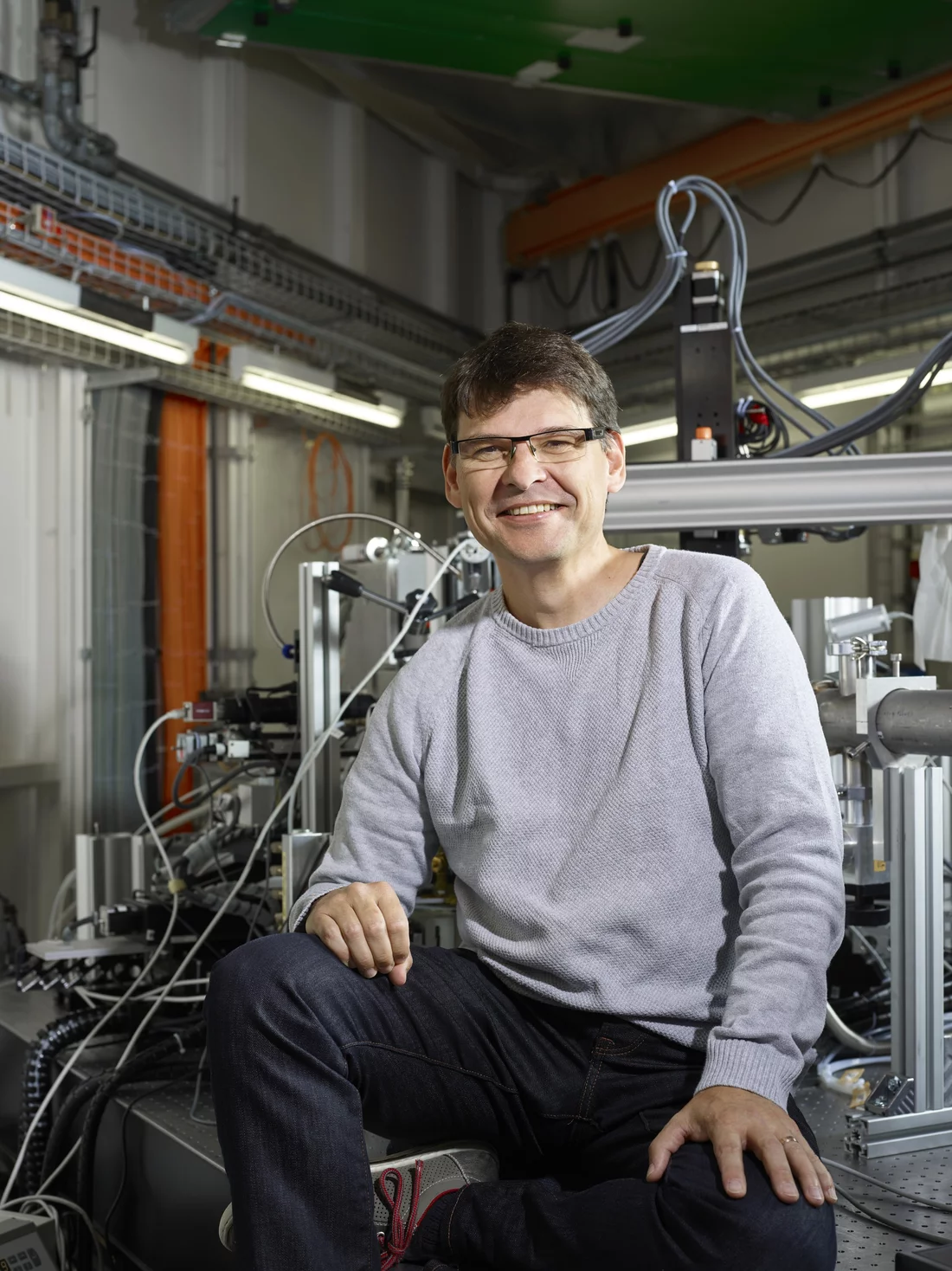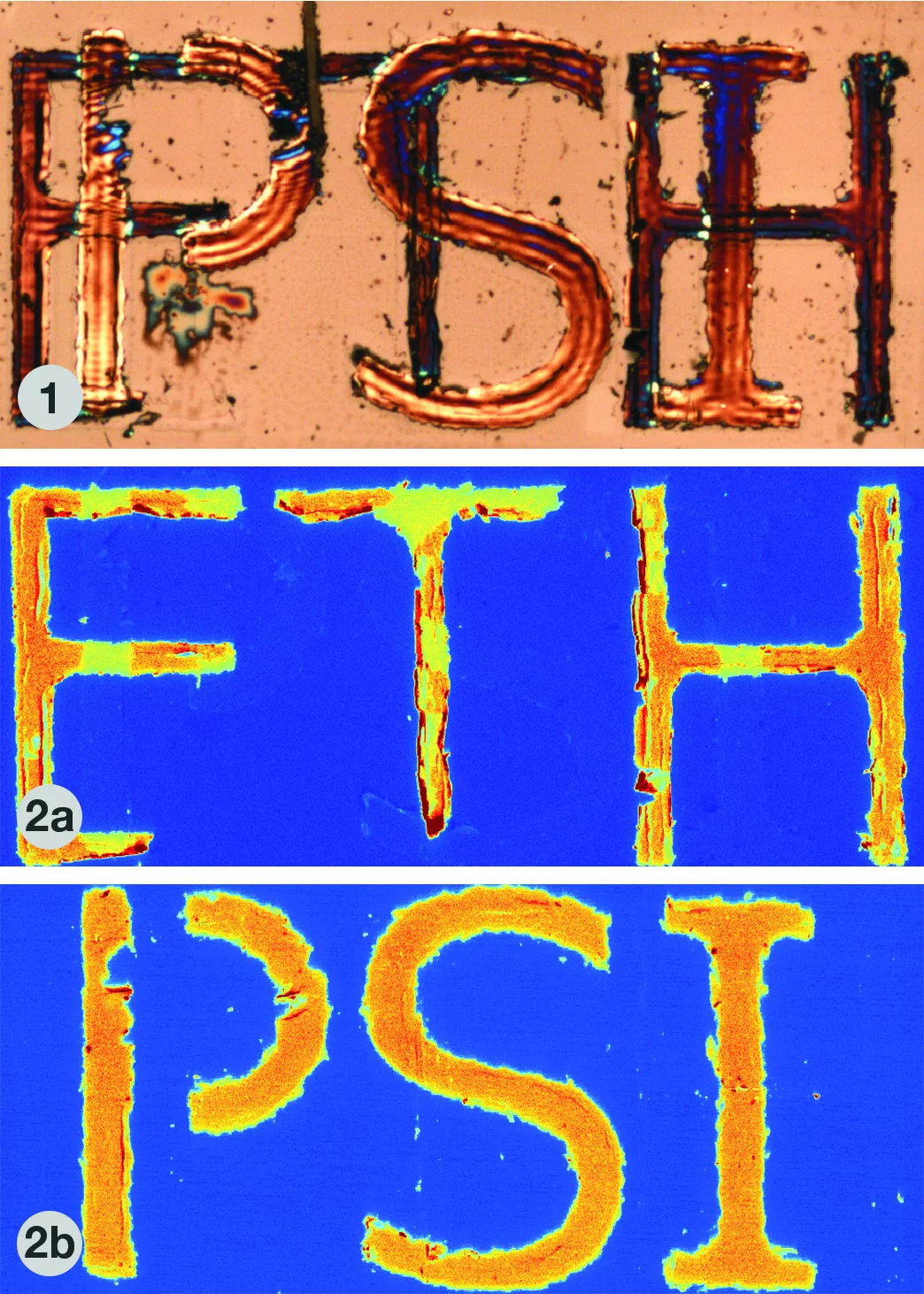Interview with Daniel Grolimund
At the Swiss Light Source SLS, researcher Daniel Grolimund is responsible for a beamline where the arrangement of chemical bonds in different objects can be determined. These capabilities prove valuable to researchers in the most diverse disciplines: to battery researchers as well as biologists, archeologists, and many more. In this interview Grolimund talks about the variety of topics and the challenges that come with this diversity.
You run a beamline at the Paul Scherrer Institute where different objects can be probed with X-ray light from the Swiss Light Source SLS. Researchers from universities or other institutes come to you, for example, with old swords, batteries, or seeds to examine. What makes it possible for them to study such diverse things at your beamline?
What’s special is the ability to do chemical imaging. That means we can see what chemical elements the sample being examined is made of. Normally you can’t see this with the naked eye. At our beamline, though, we can. A simple example: With X-rays we can show that an object contains iron. But that’s not all. We can see how the iron is incorporated. If you let iron stand around, it rusts. Then it’s still iron, but in a new state, because now it is oxidised. And the X-ray light shows us that: that it is iron, and how it is bound together with the oxygen.
And someone interested in seeds also needs this kind of knowledge?
Yes, questions like this come up everywhere. With the seeds, biologists wanted to know why grain crops are low in zinc. This is a problem because zinc deficiencies are prevalent in regions where people get most of their nourishment from grains. The plants themselves do contain enough zinc. We were able to show where the zinc accumulates and where it is blocked, so that it doesn’t get into the seeds. This knowledge will help to breed new plants whose seeds contain more zinc.
Where do the ideas come from, for all the things that can be studied at your beamline?
It is an active process that sometimes is driven by the users and sometimes by us. We look in the scientific literature to find exciting questions where we might be able to contribute something, and then we deliberately contact the appropriate research groups. In doing so, we make a targeted effort to bring Swiss researchers on board, so that we can strengthen PSI’s interaction with the Swiss universities. For example, we saw that researchers at EMPA were studying archeological objects such as Iron Age swords to find out more about how they were made. We contacted those colleagues and were able to help them reconstruct the historical metal-working techniques.
Together with colleagues from ETH Zurich, you recently investigated lithium-ion batteries. How did that come about?
That got its start because the ETH researchers had first carried out experiments at another SLS beamline. With the help of tomography, they had determined the structures inside the battery. The PSI scientist responsible for that beamline then referred the ETH colleagues to us, so that we could further determine the distribution of lithium within the battery. Together, we were able to show what happens in the battery while it is being charged and discharged. This knowledge could aid in the development of longer-lived batteries. The project shows how much collaboration matters, both within the PSI and with external groups. It is rarely just one beamline that makes the results possible.
Did you already have these diverse applications in mind when you were setting up the measuring station?
When we started the project, a good 15 years ago, it was clear that we wanted to build a chemical microscope. And it was important to be able to study radioactive materials — originally the project was a co-operation with the Nuclear Energy and Safety Research Division at the PSI. But from the beginning we were already thinking beyond that, and we built in further options. For example, not only can one do experiments here with the ordinary
X-ray light from the SLS, but we can also generate extremely short flashes of light with which experimental ideas for SwissFEL, the next large-scale research facility of the PSI, can be tested. Installing this option delayed construction by about a year, but it enabled us to create unique possibilities. We have always followed the ideology not to copy, and have instead looked for chances to perform pioneering work.
And have you pursued the study of radioactive samples?
That actually still is, to this day, an important part of our work. We have approval from the Federal Office of Public Health to study radioactive materials for a total of one month per year. That is costly on account of the complex safety procedures, but it allows us to study, for example, how radioactive material would penetrate clay rock — that is important, for example, for underground storage in the future. Or we investigate materials that have been used in nuclear power plants, thereby contributing to the safety of these plants. Here we benefit from the fact that we can manage with tiny samples, so that the cumulative radioactivity that we work with is very small.
The researchers who conduct experiments at your measuring station are engaged with very diverse topics. Do you need to get up to speed on each of these topics?
Yes, and that is very demanding. And sometimes frustrating, because I can’t get up to the level of my counterpart. But I always have to try to attain an adequate level to be able to advise the users. Often we first need to work together to boil the problem down and determine which measurement is best suited for it. And that requires a high level of understanding for the science. It can happen that you get home in the evening and think: It wouldn’t be so bad to do a run-of-the-mill experiment now and then.
You built up this beamline from nothing. Are you originally a physicist or an engineer?
At the ETH I studied environmental sciences, which is an interdisciplinary course of studies in the natural sciences. At the time, the PSI decided not to hire a specialist in setting up beamlines, but rather someone with an interest in the research topics. Thus I needed to familiarise myself with a lot of X-ray physics and a number of different subjects in engineering. It may have taken longer that way, but as a result a device was created that serves the research, rather than one that pushes the technical limit as an end in itself. I am very glad that I was given this opportunity, and after 15 years I still find it exciting.
Interview: Paul Scherrer Institute/Paul Piwnicki
About the person
Daniel Grolimund completed his doctorate in environmental sciences at ETH Zurich in 1997. After that he did research at Stanford University in California. He came to the PSI in 2001 to work on the beamline microXAS at the Swiss Light Source SLS. In 2007 he became the project leader for this beamline. He is married and has three children. His free time is devoted to the family. He enjoys hiking in the mountains, skis, and is a dedicated drummer.Additional information
Articles on research topics studied at the microXAS beamline:- Structure of
concrete disease
solved - Neutrons and synchrotron light help unlock Bronze Age techniques
- Prepared for the SwissFEL
- Watching lithium move in battery materials
Contact
Dr. Daniel GrolimundGroup leader microXAS
Laboratory for Femtochemistry
Paul Scherrer Institute
5232 Villigen PSI, Switzerland
Tel.: +41 56 310 47 82
E-mail: daniel.grolimund@psi.ch


